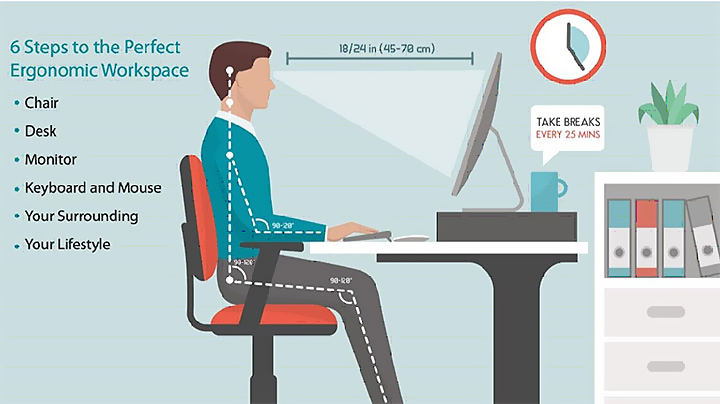

Have COVID symptoms or tested positive? Report it

Home Workstation Ergonomics
When working from home, do your best to ensure your working environment is ergonomically correct, particularly if you will be spending long amounts of time working from home. Extensive or incorrect use of laptop computers can result in physical conditions such as carpal tunnel syndrome, neck and shoulder pains, eye strain, blurred vision, and headaches.

What should you do?
Set up your laptop similar to the desktop ergonomic computer station setup as shown in the image above:
- Sit with an upright, neutral posture.
- The angle of the hips, knees, and elbows should be approximately 90 degrees.
- Eyes gaze straight ahead or slightly down.
- Seat is the correct depth so that your back is supported.
- Feet are flat on the floor (or on a footrest), removing the strain on the lower back.
- Wrists are straight and supported with a pad.
- Mouse is neither too close nor too far away so that the shoulders are not strained.
- Use a document holder when typing from hard copy.
- Use this OSHA checklist.
- Adjust your work area to achieve these guidelines. This may mean elevating your laptop on a stack of books, changing your chair, using a pillow behind your back, and putting your feet on something to raise your knees.
- Limit the time you spend on your laptop computer at any one time—take scheduled breaks, stand up, stretch, or go outside.
- Stretch It Out: For an example of stretches you can do while sitting, see this reference (PDF).
For assistance, contact the Safety & Health Services Division at Ext. 4056 or contact the Ergonomics Subject Matter Expert at Ext. 3451.



